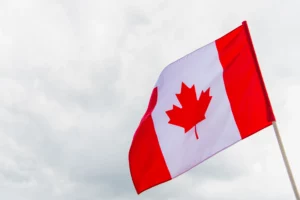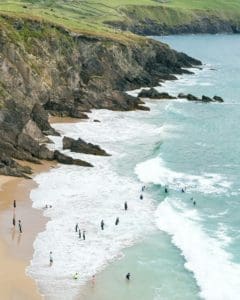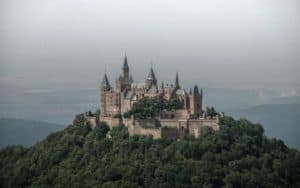Exploring the Rich Heritage of Mining in Ireland

Updated On: April 28, 2024 by Aya Radwan
Ireland’s captivating landscape hides a fascinating secret beneath its rolling hills and dramatic coastlines – a rich history of mining that stretches back millennia. From the Bronze Age allure of copper to the modern extraction of zinc, this island nation’s story is intricately linked to the treasures found deep underground.
This article embarks on a journey through time, uncovering the captivating narrative of Irish mining. We’ll explore the early ingenuity of Bronze Age miners, delve into the Industrial Revolution’s impact on mineral extraction, and examine the legacy of mining in Ireland today.
So, if you’ve ever wondered about the hidden story beneath Ireland’s surface or are curious about historical tales and the wonders of nature, then this exploration is for you. Prepare to be surprised by the enduring legacy of mining in the Emerald Isle.
Overview of Mining in Ireland
Mining in Ireland has a long and fascinating history, with significant base metal discoveries and various minerals extracted, including zinc, lead, and coal. Major mining companies such as Boliden AB and Conroy Gold and Natural Resources play a vital role in the island’s mining industry.
Exploring Ireland’s rich mining heritage means tracing the industry’s beginnings in primitive form until it reached high-tech, speedy mining in the 21st century. There were various operating mines across the island, which changed into a few operating mines recently. Following the latest legislative and environmental regulations to preserve the health of our planet is at the forefront of modern mining in Ireland.
History of Mining in Ireland
Mining in Ireland has a long, rich past. It goes back to the Bronze Age. This period witnessed the island’s transition from a predominantly Neolithic society, focused on agriculture and stone tools, to one utilising metal for the first time. Many years ago, there was a lot of busyness at Glendalough in County Wicklow because of mining. However, Glendalough is more famous for its monastic settlements and as St Kevin’s final resting place.
The earliest evidence of metal mining in Ireland comes from copper workings at Ross Island in County Kerry. Radiocarbon dating places these mines between 2400 and 2000 BC, making them some of the oldest recognised copper mines in northwest Europe. Mining in County Wicklow, for example, comes from the opening of an ocean called Iapetus about 480 million years ago!
There are also silver mines, famous for their mine work with base metal, which they have been doing for more than 1,000 years. Copper wasn’t the only metal prized by Bronze Age communities in Ireland. Gold, though less common, also played a significant role. Alluvial gold, found as flakes or nuggets in riverbeds, was likely the primary source. However, some evidence suggests early gold mining might have existed, with potential sites identified in Counties Wicklow and Wexford.
The extracted copper and gold were processed and transformed into tools, weapons, and decorative objects. Notably, due to the relative scarcity of tin in Ireland, Bronze Age metalworkers didn’t create true bronze (an alloy of copper and tin) as often as their European counterparts. Instead, they used a form of arsenical bronze, where arsenic was added to copper for hardening purposes.
Ireland has significant zinc mining operations, particularly in County Tipperary at the Silvermines and County Clare at the Galmoy mine. These mines exploit unique types of zinc deposits found in Ireland. Although coal mining in Ireland made it to the history books and took place around the 19th and beginning of the 20th centuries, many of its aspects remain unclear.
The development of metalworking significantly impacted Irish society. Copper axes revolutionised woodworking, while bronze weaponry enhanced warfare capabilities. The discovery and utilisation of these metals ushered in a new era of innovation and social change, laying the foundation for the rich and complex history of mining that would continue to shape Ireland’s future.
Current Significant Base Metal Discoveries
Ireland has witnessed some significant base metal discoveries in recent times. One notable discovery is the existence of “Irish-Type” zinc deposits, which are unique to the country. These zinc deposits indicate the potential for further exploration and mining activities in Ireland. Furthermore, historical findings of lead, copper, and silver mines showcase the rich mineral wealth present in this region.
Zinc, a vital component in galvanisation (protecting steel from rust) and brass alloys, is extracted from several large underground mines. Ireland boasts the giant Navan deposit in County Meath, containing over 70 million tonnes of ore. Mines in Lisheen (County Tipperary) and Galmoy (County Kilkenny) have positioned Ireland as a leading European zinc producer.
Lead is another historically significant metal found in batteries, ammunition, and pigments. While its use is declining due to environmental concerns, Ireland still possesses some lead deposits. However, current mining activities focus primarily on zinc extraction, with lead often recovered as a by-product.
These discoveries contribute to Ireland’s economy, generating jobs and revenue and offer exciting opportunities to explore the country’s mining heritage. From ancient mining sites like Tara Mine in County Meath to recent ventures like Copper Coast Geopark, these destinations glimpse Ireland’s mining past and cultural significance. Additionally, responsible and sustainable mining practices can ensure the responsible utilization of these natural resources while minimizing environmental impact.
Types of Minerals Extracted in Ireland

Ireland’s geological tapestry extends beyond its breathtaking landscapes. Beneath the rolling hills and dramatic coastlines lies a wealth of minerals, which have played a significant role in the island’s economy for centuries. Let’s delve into the types of minerals extracted, their locations, and their importance. These diverse minerals contribute to Ireland’s economy and offer valuable resources for various industries.
Base Metals: Leading the Charge
Ireland’s mining industry currently prioritises base metals, especially zinc. This vital metal, used to protect steel from rust and create brass alloys, is extracted from large underground mines like the massive Navan deposit (over 70 million tonnes of ore). Several other mines across Ireland, including Lisheen and Galmoy, contribute to the country’s position as a leading European zinc producer.
Historically important for batteries, ammunition, and pigments, lead still holds some value despite declining use due to environmental concerns. While some lead deposits exist, current mining focuses on zinc extraction, with lead often recovered as a by-product.
Beyond Base Metals: A Diverse Landscape
Ireland’s mineral wealth extends beyond base metals. Limestone, a sedimentary rock with widespread applications in construction and agriculture, is extensively quarried throughout the country. Gypsum, used in plasterboard production, is extracted in County Cavan, while dolomite, employed in construction aggregates, comes from sites in County Kilkenny. Fireclay and silica sand, valuable for ceramics and glass production, are also mined in Ireland.
Historical Echoes: Coal Mining’s Legacy
While coal mining isn’t a major player today, its historical significance shouldn’t be overlooked. Extensive coal deposits were mined across Ireland from the 18th to the early 20th centuries, particularly in Counties Leitrim, Clare, and Leinster. Though operations have largely ceased, coal mining played a crucial role in Ireland’s industrial development, fueling power generation and various industries.
The Significance of Mineral Extraction
The extraction of these diverse minerals contributes significantly to Ireland’s economy. It generates jobs, fosters related industries and provides valuable resources for construction, manufacturing, and other sectors. Additionally, responsible mining practices can ensure the sustainable utilization of these natural resources while minimizing environmental impact.
Looking North: A Shared Resource Legacy
Northern Ireland also has a rich mining history, with mineral deposits similar to the Republic’s. Lead, zinc, and coal mining were historically significant, with notable mines such as the lead and zinc mines in the Sperrin Mountains and the coal mines in various locations throughout the region. While large-scale mining operations are currently limited, the potential for future exploration and extraction remains.
Major Mining Companies in Ireland

Ireland is home to several major mining companies, such as Boliden AB and Conroy Gold and Natural Resources. These companies play a crucial role in the country’s exploration and extraction of minerals and contribute to the island’s overall economic development.
Boliden AB, a Swedish mining company, has been involved in zinc mining activities in Ireland. The company operates the Tara Mine, one of the largest zinc mines in Europe, located in County Meath, Ireland. Tara Mine is known for its significant zinc production and contribution to Ireland’s mining industry.
Conroy Gold and Natural Resources is an Irish-based company focused on gold exploration projects in Ireland. The company explores and develops gold deposits across various country regions, contributing to efforts to tap into Ireland’s gold potential.
The presence of major mining companies like Boliden AB and Conroy Gold and Natural Resources underscores the ongoing efforts to explore and develop Ireland’s mineral resources. These companies invest in exploration and extraction projects, contributing to the country’s economic growth and resource development.
Exploring the Rich Heritage of Mining in Ireland
Discover ancient mining sites like the famous Tara Mine and Copper Coast Geopark, and uncover the impact of mining on Ireland’s economy and culture. Exciting controversies surrounding new mining ventures in Ireland await exploration. Let’s delve into the rich history and importance of preserving Ireland’s mining heritage.
Famous Mining Sites in Ireland (Tara Mine in County Meath, Copper Coast Geopark, etc.)
Ireland is home to several famous mining sites that are worth exploring. One such site is the Tara Mine in County Meath, known as one of the largest zinc mines in the world. It has been operating since 1977 and has played a significant role in Ireland’s zinc mining industry.
Another notable site is the Copper Coast Geopark, located along the southeastern coast of Ireland. The geopark showcases the region’s geological and mining heritage, offering visitors insights into the area’s copper mining history and stunning coastal landscapes. Visitors can explore old mining sites, learn about the mining processes, and appreciate the natural beauty of the coastal landscape.
Tara Mine and the Copper Coast Geopark have significantly impacted Ireland’s economy and culture. Tara Mine has contributed to Ireland’s zinc production and economic development, while the Copper Coast Geopark preserves and celebrates the region’s mining heritage, attracting tourists and supporting local communities.
Impact of Mining on the Irish Economy and Culture
The mining industry has significantly impacted Ireland’s economy and culture. It has played a crucial role in providing employment opportunities and boosting the country’s economic growth. The discovery of valuable minerals such as zinc, lead, copper, silver, and coal has contributed to Ireland’s mineral extraction sector. This has attracted major mining companies to invest in the country, creating jobs for local communities.
Furthermore, mining sites like Tara Mine and Copper Coast Geopark have become popular tourist attractions, showcasing Ireland’s rich mining heritage to visitors worldwide. However, controversies surrounding new mining ventures have raised concerns about environmental impacts and community well-being. Despite this, preserving Ireland’s mining heritage is important as it reflects its history and cultural identity.
Controversies Surrounding New Mining Ventures in Ireland
New mining ventures in Ireland, as in many other places, often raise concerns about potential environmental impacts, such as water pollution from mining activities and habitat destruction due to land disturbance. These concerns are valid and are subjects of scrutiny and debate during the permitting process for new mining projects.
Mining projects can lead to the displacement of local communities if they require land acquisition or if environmental impacts make areas unsuitable for habitation. Additionally, traditional mining sites may have cultural significance to local communities, and their disruption or closure can result in the loss of cultural heritage.
There is often debate over how new mining ventures will bring economic benefits to Ireland, with some arguing that the benefits may primarily accrue to multinational mining companies rather than local communities. Questions may arise regarding the distribution of profits, job creation, and the long-term economic sustainability of mining projects.
The controversies surrounding new mining ventures underscore the importance of careful consideration and regulation to balance economic development with environmental protection and cultural preservation. Effective regulation can help mitigate the potential negative impacts of mining while maximising the benefits to local communities and safeguarding environmental and cultural resources.
Importance of Preserving Mining Heritage in Ireland

Preserving Ireland’s mining heritage offers a multifaceted benefit. It connects the island nation to its past, fosters education and scientific research, contributes to the economy and encourages responsible practices for future mining endeavours.
Historical and Cultural Significance
Digging deep underground helps us understand how locals made a living in ancient times. These practices are closely tied to the people’s livelihood. Mining in Ireland has deep roots, and studying it closely offers deep insight into the island’s rich history.
- Understanding the Past: Mining has been central to Ireland’s history for centuries. Preserving this heritage illuminates past technological advancements, societal structures, and economic development.
- Learning from Ancestors’ Techniques: Studying old mining techniques can inform modern practices, potentially leading to safer and more efficient extraction methods.
- Cultural Identity and Local Communities: Mining has shaped the identity of many Irish communities. Preserving heritage sites can foster a sense of place and connection to the past for residents.
Educational and Scientific Value
Old and current mining sites represent rich study materials full of mining heritage. Students and scholars can visit to learn more about the island’s underground history, and tourists can marvel at its incredible tapestry.
- Unearthing Knowledge: Abandoned mines and historical artefacts can offer valuable insights into geology, engineering practices, and even social life during the mining eras.
- Educational Resources: Preserved mining sites can serve as educational resources for students and the public, promoting understanding of Ireland’s industrial development.
- Scientific Research: Old mines can be used for scientific research in various fields, like studying historical environmental changes or the impact of mining practices.
Economic Benefits
Mining sites boost the economy through precious minerals and can be transformed into tourist attractions, attracting thousands of visitors annually. Mining in Ireland provides major economic benefits for the island.
- Tourism and Heritage Sites: Preserved mining sites can be transformed into tourist attractions, generating revenue for local communities and boosting the economy.
- Promoting Sustainable Practices: These sites can encourage responsible and sustainable practices in modern mining endeavours by showcasing historical mining and its impact.
- Economic Diversification: Preserved heritage sites can attract researchers, artists, and other professionals interested in mining history, leading to economic diversification in former mining communities.
Environmental Considerations
To move forward, we must learn from yesterday’s lessons. Mining significantly impacts the earth’s soil and the surrounding environment. As we study mining in Ireland, we must learn better to preserve our world from mining’s harmful implications.
- Preventing Environmental Damage: Preserving and properly managing abandoned mines can help prevent environmental hazards like water contamination or uncontrolled waste disposal.
- Promoting Responsible Mining: By learning from past mistakes, preserving mining heritage can encourage more responsible and environmentally conscious practices in future mining activities.
- Habitat Restoration: Reclaiming and restoring former mining sites can create valuable habitats for wildlife, promoting biodiversity and environmental health.
In conclusion, Ireland’s rich mining heritage presents a fascinating opportunity for exploration, offering a glimpse into its industrial past and hopes for the future. Despite controversies surrounding new mining ventures, preserving and valuing this unique cultural heritage is important for future generations to appreciate.
FAQs
1. What is Ireland’s rich mining heritage?
Ireland’s mining heritage is rich in famous mines, traditional techniques, and vast deposits, including zinc, lead, and silver.
2. Why are industrial minerals like gypsum and brick shale important in Irish mining history?
Gypsum and brick shale mining are vital parts of Irish mines and minerals. They have been key to the growth of the country’s mining industry.
3. Can you tell me about some historical Irish mining sites?
Historical Irish mining sites include areas noted for ore extraction, such as zinc lead silver mines, which form part of the exploration of Ireland’s mining past.
4. How do people preserve the Irish Mining Heritage?
Preserving the Irish mining heritage involves keeping old mines safe while sharing their cultural significance through tours and activities that explore this important part of Ireland’s past.
5. Do we still mine for silver, lead or zinc in Ireland today?
Today, due to rich zinc-lead deposits, both lead and zinc mines produce active output, making them a major aspect of our understanding when exploring Ireland’s rich Mining Heritage.






